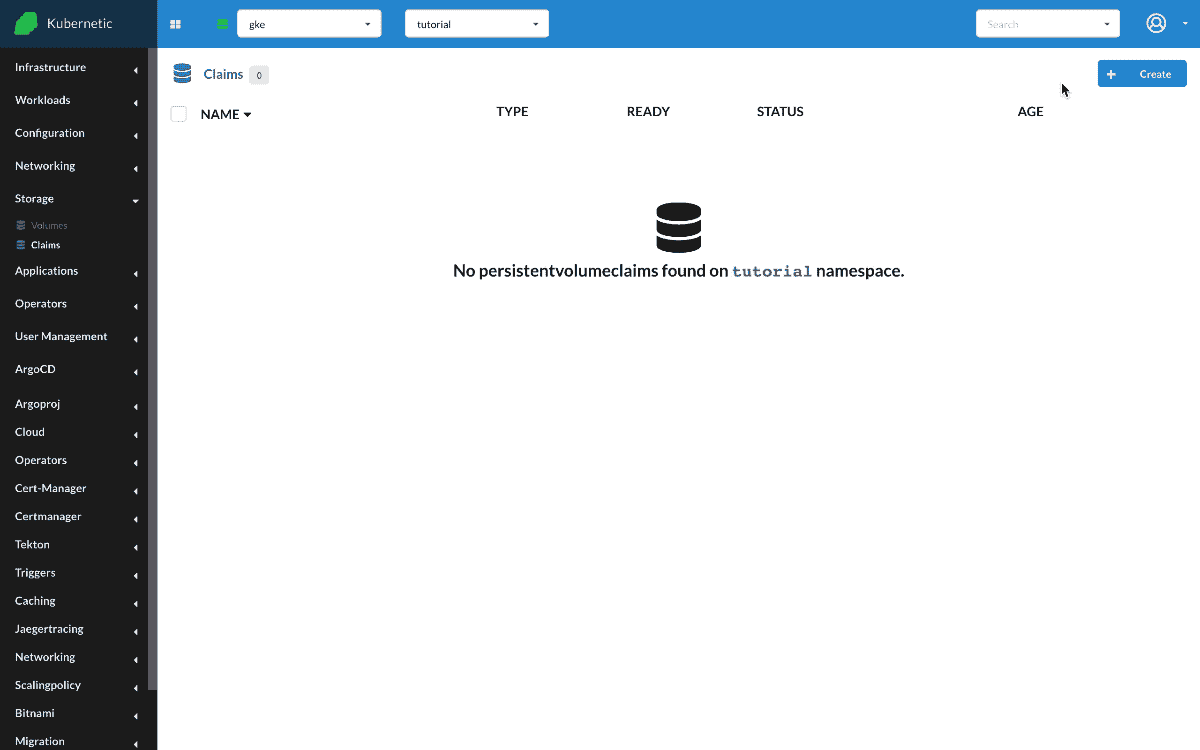Claims
TIP
During this tutorial you'll learn how to manage Claims on Kubernetes.
- Level: beginner
- Requirements: default StorageClass
- Previous Tutorials: statefulsets
- Can run on Cluster: any
- Can run on Namespace: any
- Images used:
nginx:alpine
PersistentVolumeClaim is a request for storage by a user.
Nginx with Persistent Volume Claim
We 'll be running an Nginx instance and we'll connect a Claim (PVC) for persistent data.
First let's go and create a Claim of 1Gi. Once the Claim is created it will firstly appear as Pending until the request is processed by the StorageClass provisioner.
- Create
PersistentVolumeClaim- Name:
pvc-test - Capacity Storage:
1Gi
- Name:

WARNING
You need to have a default StorageClass configured in your cluster so that Claims can be provisioned.
Now that we have created the Claim and is bound properly, let's create the Nginx instance and mount the Claim. We use StatefulSet as they are more appropriate when persistent data are involved:
- Create
StatefulSet- Name:
nginx-claim - Image:
nginx:alpine - Volumes: [
/storage:Claim(pvc-test)]
- Name:
Once created we can open a terminal and check the mounted volume is there, we create an README.txt file with some contents, restart the StatefulSet and check again to make sure the data are persistent across restarts.
/ # cd /storage/
/storage # ls
lost+found
/storage # echo Hello > README.txt
/storage # cat README.txt
Hello
2
3
4
5
6

Cleanup
Remember to delete the following resources after you finish this tutorial:
- on active namespace:
claims/teststatefulsets/nginx-claim